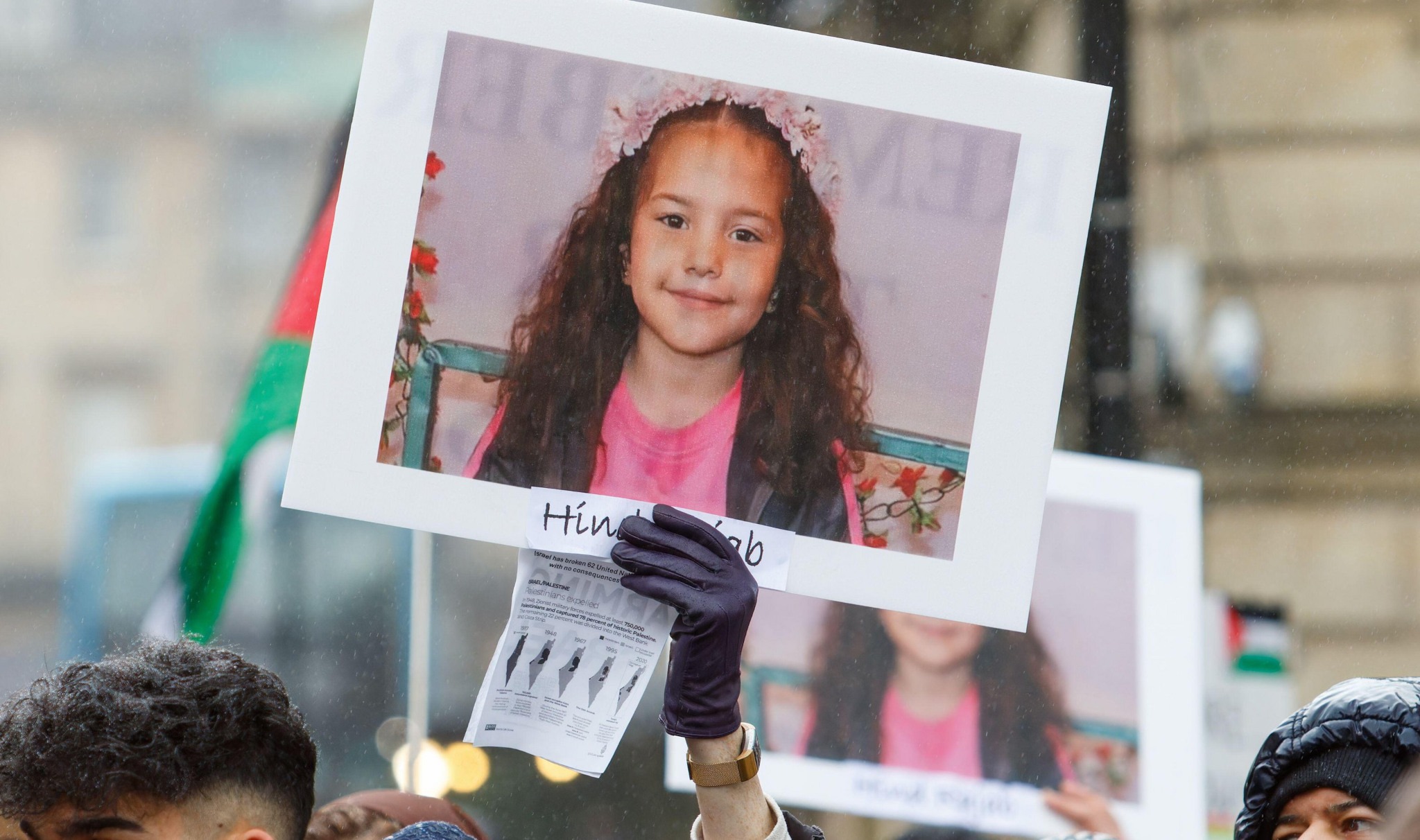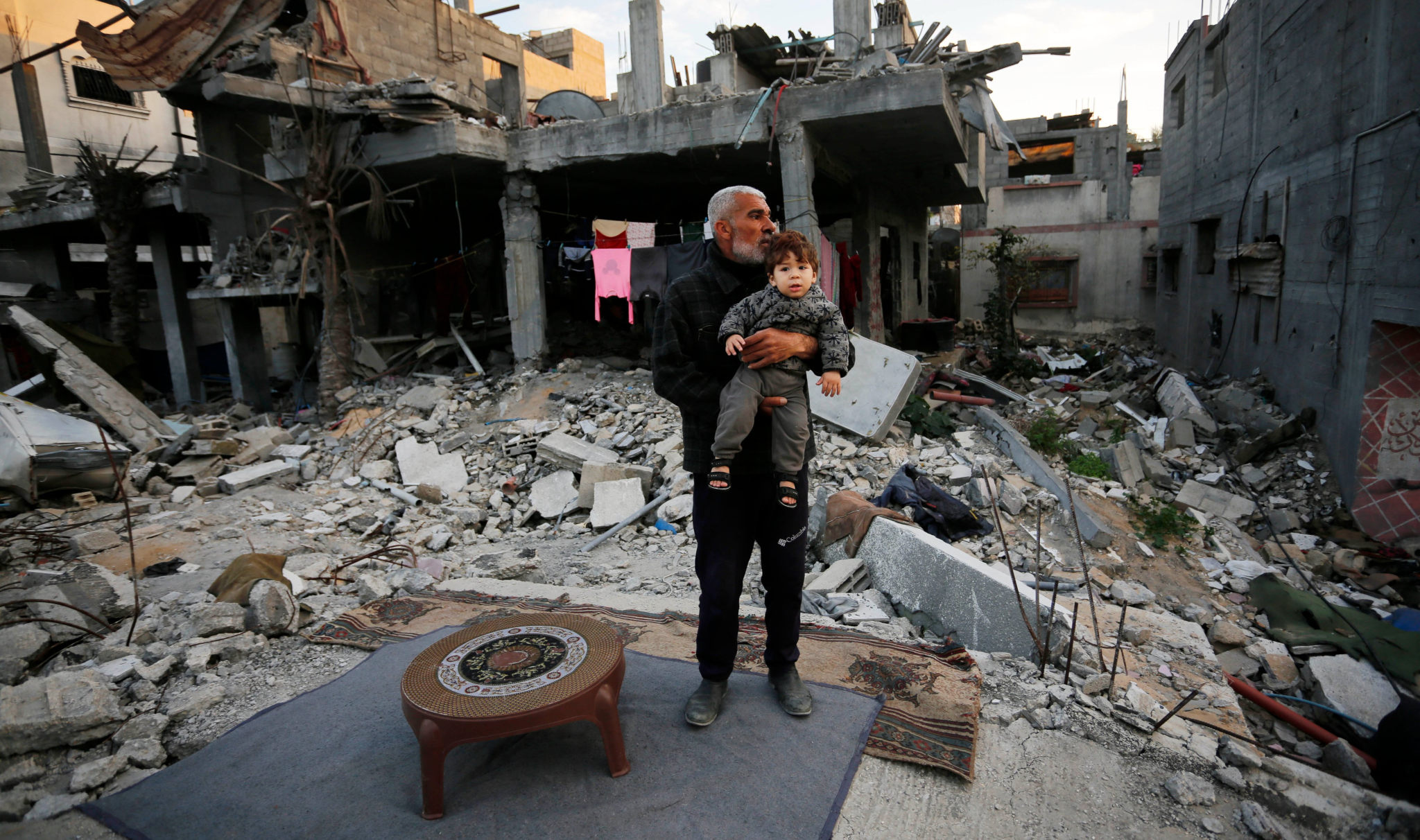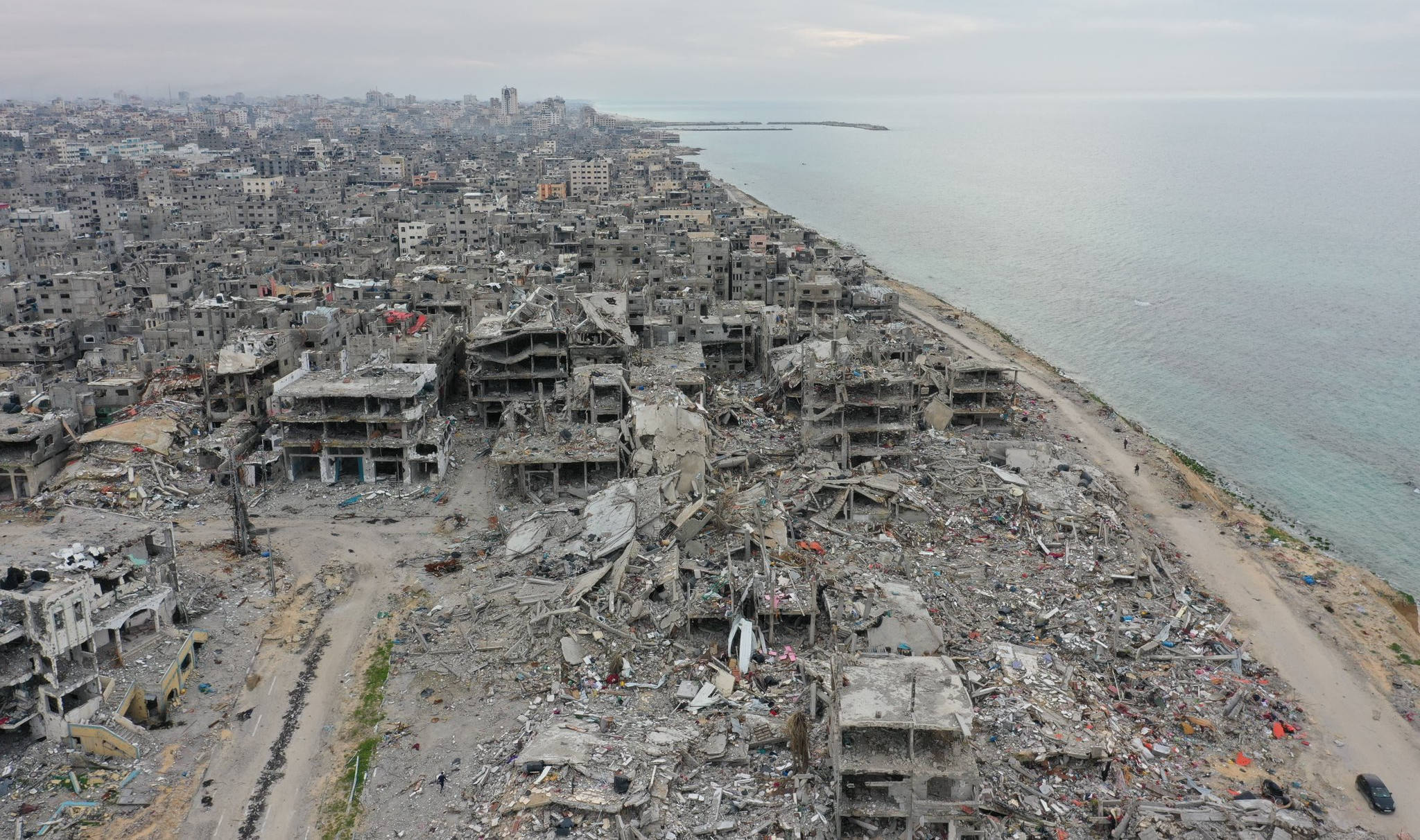When students at Columbia University in New York occupied Hamilton Hall on 29 April as part of their pro-Palestine encampment, they renamed the building ‘Hind’s Hall’.
This was in memory of six-year-old Hind Rajab who was killed in Gaza exactly three months earlier, along with six other family members, when the Israeli army attacked the car she was travelling in.
Investigations, including those carried out by Al Jazeera and the Washington Post have established IDF involvement despite their denial.
When their bodies were eventually discovered on 10 February, after the IDF pulled out of Gaza City, along with the corpses of the two Palestinian Red Crescent medics sent to help her, Hind’s murder was headline news around the world.
However, as is the case so often with UK mainstream media coverage of Israel’s assault on Gaza, many outlets were reluctant to attribute responsibility to Israeli forces and reported Palestinian deaths using the passive voice.
The BBC scandalously reported the story as “Hind Rajab, 6, found dead in Gaza” while both the Observer and Sunday Times carried similar headlines, that she had somehow just “died”.
That a young child and her family could have been targeted and killed while trying to escape danger is precisely the kind of “human interest” story that you might have thought mainstream news organisations would focus on to illustrate what they often describe as the “tragedy” of events in Gaza.
Interest evaporated
It’s true that there were hundreds of stories in the UK media that weekend but their interest in these events immediately evaporated.
Out of the 282 stories across all platforms, many of which were accounted for by the same piece running across different BBC regional bulletins, there were only 24 stories on Hind from the following weekend up until the Columbia students’ actions.
Most of these references were in readers’ letters, parliamentary transcripts, comment pieces and the London-based Arab press.
The BBC’s promise in a story on 5 February to extract the truth about Hind’s whereabouts from the Israeli army and the Guardian’s attempt to contact the IDF following the announcement of her death appear never to have been followed up.
The last reference to Hind in the Guardian (until the end of April) was in its “First Dog on the Moon” cartoon strip on 12 February while the BBC’s sole mention after the initial flurry was on 27 February when it rejected a complaint from readers about its coverage.
The internal adjudication insisted that the BBC was right not to attribute blame given what it knew at the time and stated that it had asked the IDF several times for details on its operations on 29 January.
Remaining silent
The lack of interest by leading UK news outlets in following up the story and holding the IDF to account is all the more disturbing given that other actors were much busier.
So, for example, the BBC (and other mainstream news media) failed to report on major developments in the case. These included initial findings on 12 February from a leading European human rights organisation that Israel was responsible for the family’s murder.
“Despite their earlier promises, organisations like the Guardian and the BBC remained silent”
Also important were distressing new audio in relation to her death that was widely circulated around the world on 19 February, a comprehensive Al Jazeera investigation of events broadcast on 22 February and even Israel’s denial of involvement that was published on 26 February.
Despite their earlier promises, organisations like the Guardian and the BBC remained silent.
This is all the more shocking when you see that the Washington Post, hardly a bastion of pro-Palestine sentiment, published an extensive and forensic investigation into the events of 29 January in a piece published on 16 April.
Using satellite images, open-source maps and eyewitness interviews, it found that despite repeated IDF denials, the army had indeed been in the area that day.
Did the Guardian and the BBC, or any other UK news organisations, rush to report this and to revise their refusal to attribute blame in the light of new evidence? They did not.
Investigation
Instead it was left to the Jerusalem Post to call on the Israeli army to carry out a full investigation, albeit of course simply as a way of “maintaining legitimacy and allied support” for its genocidal actions.
Reuters, meanwhile, reported that, following the Washington Post story, the State Department was planning to add its weight for a full investigation (though not surprisingly, nothing has been forthcoming).
This was the state of play until the Columbia students took their solidarity action and renamed their occupied building in memory of Hind. This led to a further flurry of references to the events of 29 January but, for the most part – and despite the updated evidence – few lessons had been learnt.
The BBC’s US coverage on 30 April of the Columbia occupation referred to Hind as a “six-year-old found dead in Gaza earlier this year”.
The Guardian described her as having been “killed by gunfire in January” and, in a separate story, as having been “found dead inside a car surrounded by her relatives”.
Dehumanisation
Israeli responsibility, where it was mentioned, was always alleged, as in the claim by The Times (1 May) that Hind was a “six-year-old girl whose family say she was killed by the Israeli army”.
There were some limited exceptions. On 1 May, the Independent stated that Hind was “killed by Israeli military” while the Guardian, for the very first time, acknowledged that she was “killed by Israeli forces earlier this year” (although this was one isolated phrase in a much longer story about the campus protests).
The tone of the coverage and the lack of interest in pursuing the perpetrators is hardly exclusive to the murder of Hind Rajab. It’s resonant of the wider dehumanisation and misrepresentation of Palestinian lives that we have seen in mainstream reporting of the assault on Gaza.
But the silences are revealing of a further problem – of a kind of historical amnesia in which “uncomfortable” elements of the past are airbrushed out.
Things like occupation and ethnic cleansing are largely absent from a journalism which has a different chronology and a specific politics: one in which the “war” started on 7 October and in which the demand for Palestinian sovereignty is marginalised or simply forgotten.
However, while individuals suffer from amnesia as a result of trauma, the media’s forgetting is self-induced: a deliberate act designed to insulate them from having to report or to follow up stories – for example on military links with Israel, genocide or the murder of innocent six-year-old girls – that might upset governments in London, Washington and Jerusalem.
And when mainstream news outlets do even partially acknowledge an outrage, the reaction, as evidenced by the coverage of the murder of Hind Rajab, appears to be one of “move on – nothing to see here”.
We cannot afford to move on nor to look away and a journalism that does this is part of the problem.





